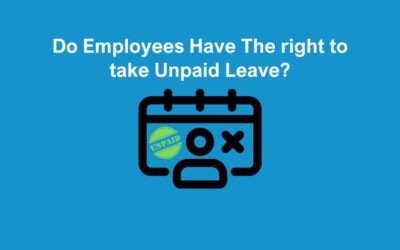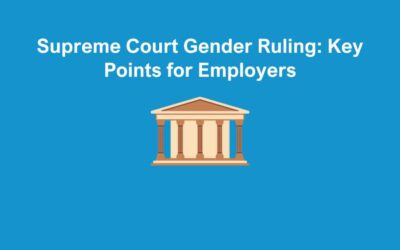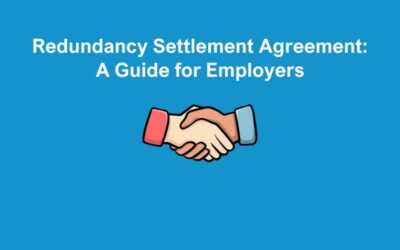It is essential to ensure that the entire redundancy process is thoroughly documented to provide a clear and transparent record. This includes taking detailed minutes of all meetings and maintaining copies of all correspondence with employees. Proper documentation helps demonstrate that the process was conducted fairly and in compliance with legal requirements. Where possible, involve more than one manager in the scoring process to ensure objectivity and reduce the risk of bias. Having multiple managers involved also helps strengthen the credibility of the decisions made and ensures the scoring is robust and impartial.
What role does an employee’s length of service play in redundancy decisions?
Length of service can be tricky as it can open you to age discrimination claims. This used to play a big role in redundancy selection criteria, but is not used now.
How should employers approach performance-based criteria to avoid potential claims of unfair dismissal?
It is important to have all performance concerns and related discussions well-documented to support transparency and consistency in decision-making. This documentation can take the form of one-to-one meeting notes, detailed file notes, or formal appraisals. Keeping accurate records of these conversations ensures there is a clear and factual basis for any decisions, particularly if performance is a factor in redundancy selection criteria. Comprehensive documentation also demonstrates that any concerns were communicated to the employee in a timely and fair manner, allowing them an opportunity to address and improve their performance where applicable. This is a key aspect of redundancy selection criteria.
Are there any groups of employees that require special consideration during the redundancy process?
Yes, those who have a disability may require special consideration. You should consider this when using “absence” as a scoring criteria. You should discount any absences you know have been related to a disability. The same thought would apply to those who require reasonable adjustments in the workplace, they should not be scored less due to this.
What steps should be taken to minimise the risk of discrimination claims during redundancy selection?
To minimise the risk of discrimination claims, follow and document your process. As part of the redundancy selection criteria, ensure you have any documentation relating to performance, absences or quality available.
What documentation or evidence is essential to support redundancy decisions if they are challenged?
The more documentation you have the better. This can include:
- Absences records
- Return to works
- One to one reviews
- Appraisals
- Quality / error records
- Customer complaints
- Disciplinary / formal discussion records
- File notes
- Performance statistics
Anything relevant to the person that can document and demonstrate that the decision has been made fairly, reasonably and based on the available information.
How can employers support employees who are selected for redundancy?
There are a number of ways you can support employees who are selected for redundancy:
- If you have an EAP you can refer them to this.
- You must ensure that you keep in touch with them regularly and communicate clearly.
- Refer staff to organisations that can help them find a new job
- Assist with updating their CVs and provide references to hand.
How should employers communicate the redundancy process and outcomes to the wider workforce?
We would always advise that if there is a set group being placed at risk that this is done in person via a company announcement. The details of which can be issued to the wider workforce. This would be the same for concluding the process. The wider workforce do not need to know the ins and outs but you can advise them that the process has concluded and thank anyone for their support during.
How The HR Booth Can Support You with Redundancy Selection Criteria
Navigating redundancy can be a complex and sensitive process, particularly when it comes to establishing and applying fair selection criteria. We understand the importance of getting this right to ensure compliance with employment law while treating employees fairly and respectfully. Here’s how we can help:
- Developing Tailored Selection Criteria: We can assist you in creating objective and measurable redundancy selection criteria that align with your business needs. This may include factors such as performance, skills, attendance records, and disciplinary history.
- Guidance on Fair Scoring: Our team can provide advice on how to score employees fairly and consistently against the agreed criteria, helping to minimise the risk of bias or claims of unfair treatment.
- Facilitating Manager Training: To ensure the scoring process is carried out correctly, we can provide training for managers involved in the redundancy process, equipping them with the skills to apply the criteria impartially.
- Ensuring Compliance: We’ll guide you through the legal requirements surrounding redundancy, including the fair application of selection criteria, to ensure you meet your obligations and reduce the risk of disputes or claims.
- Providing Documentation Support: From drafting the redundancy matrix to documenting meetings and communications, we can help you maintain accurate and thorough records that demonstrate transparency and compliance throughout the process.
- Exploring Alternatives to Redundancy: Our experts can work with you to explore other options, such as redeployment or flexible working arrangements, that may help reduce the need for redundancies altogether.
By partnering with The HR Booth, you can approach redundancy selection criteria with confidence, knowing you have expert support to manage the process effectively, professionally, and in line with best practice. Get in contact with our HR team today.







